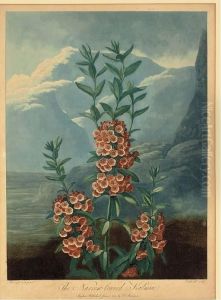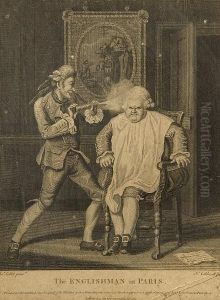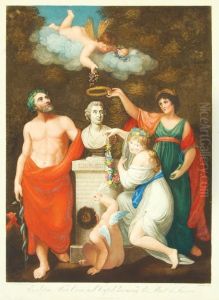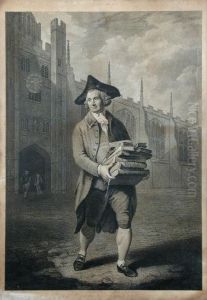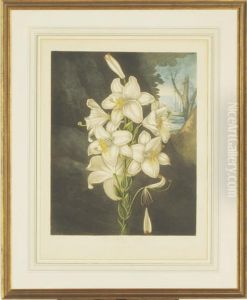James Caldwall Paintings
James Caldwall, born in 1739, was a British engraver and painter whose contributions to the arts spanned the late 18th and early 19th centuries, a period marked by significant developments in European art and culture. Caldwall's career was distinguished by his adept skill in engraving, a form of printmaking that involves incising a design onto a hard, usually flat surface, by cutting grooves into it. This technique was crucial for the reproduction of images before the advent of modern photographic processes, making engravers like Caldwall vital to the dissemination of art and ideas.
Caldwall's work as an engraver encompassed a wide range of subjects, including portraits, landscapes, and historical scenes, reflecting the diverse interests of the period. He was an active member of the artistic community in London, where he spent most of his career. His engravings were highly regarded for their precision and attention to detail, qualities that made them sought after by publishers and collectors alike. In addition to his engravings, Caldwall also pursued painting, though it is his work as an engraver that has left a more indelible mark on the history of art.
Throughout his career, James Caldwall contributed to numerous important publications of the time, engraving works after some of the leading artists of his day. This not only helped to elevate his reputation but also played a role in shaping the visual culture of his era. Despite the prominence of his work during his lifetime, Caldwall's name is not as widely recognized today as some of his contemporaries. However, his contributions to the field of engraving and the art world at large remain significant. He was part of a generation of artists and craftsmen who laid the groundwork for the modern appreciation of both the technical skill involved in engraving and the aesthetic qualities of prints.
James Caldwall passed away in 1822, leaving behind a legacy that, though somewhat obscured by the passage of time, continues to be appreciated by connoisseurs of fine prints and historians of art. His work exemplifies the craftsmanship and artistic integrity that were hallmarks of his era, making him an important figure in the study of 18th and early 19th-century British art.
